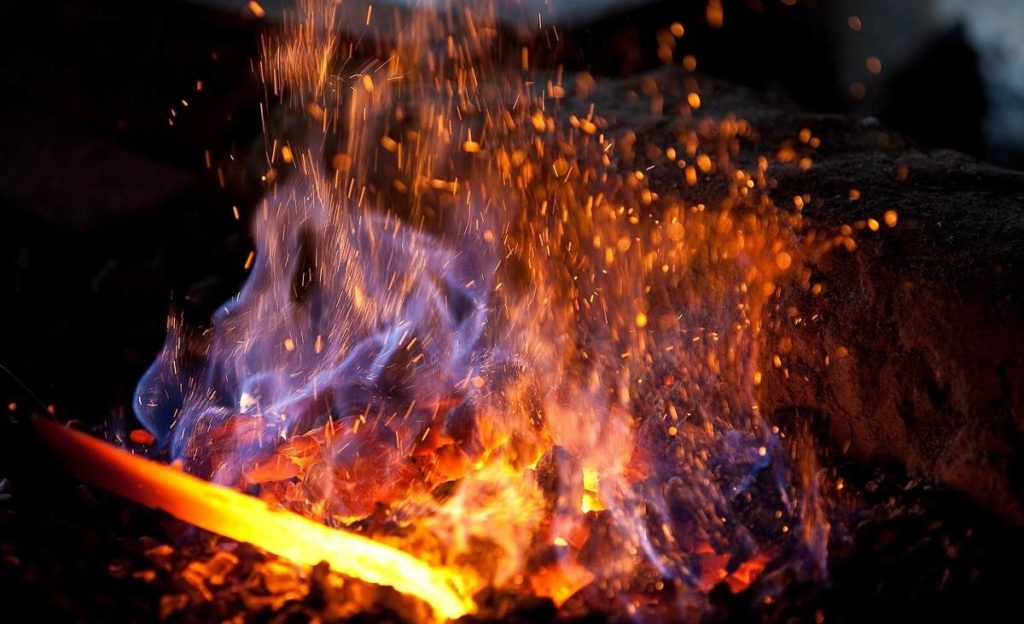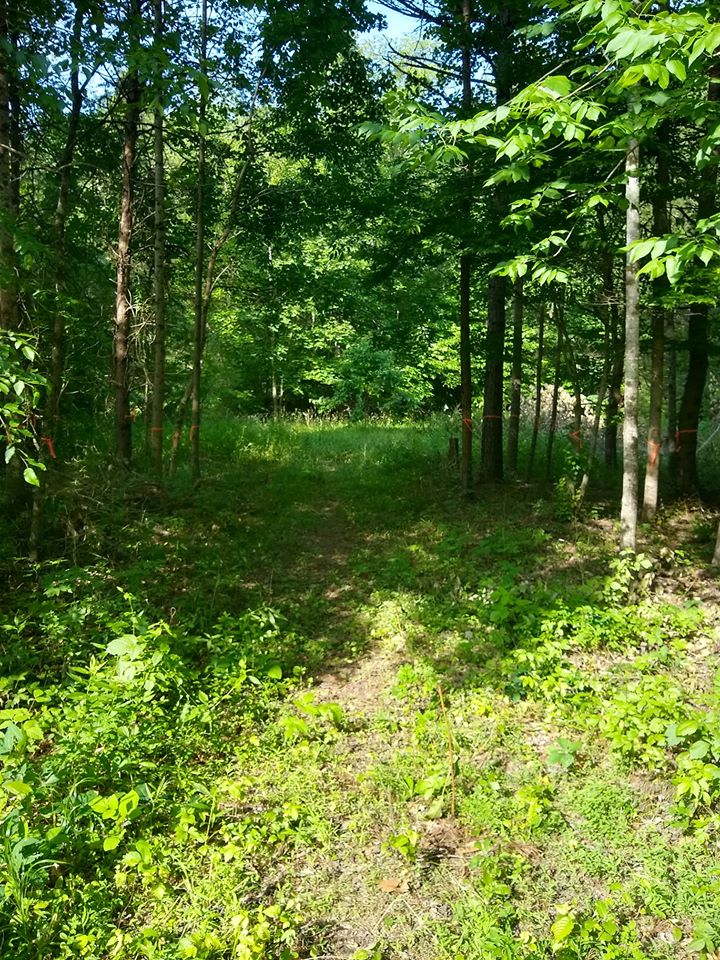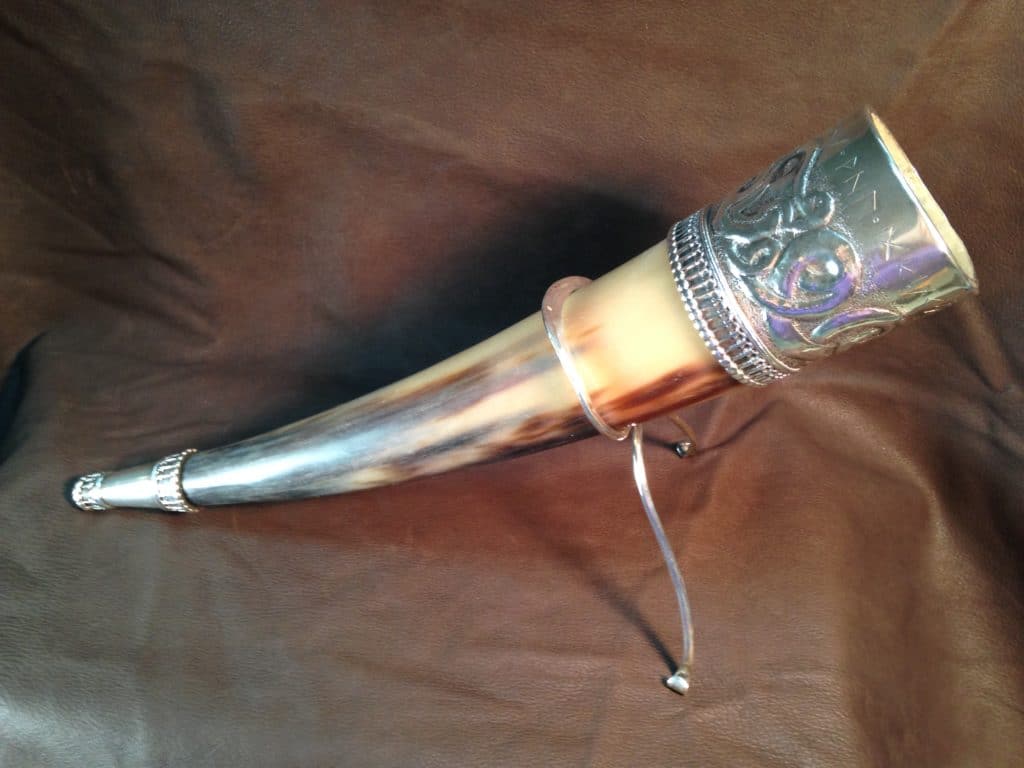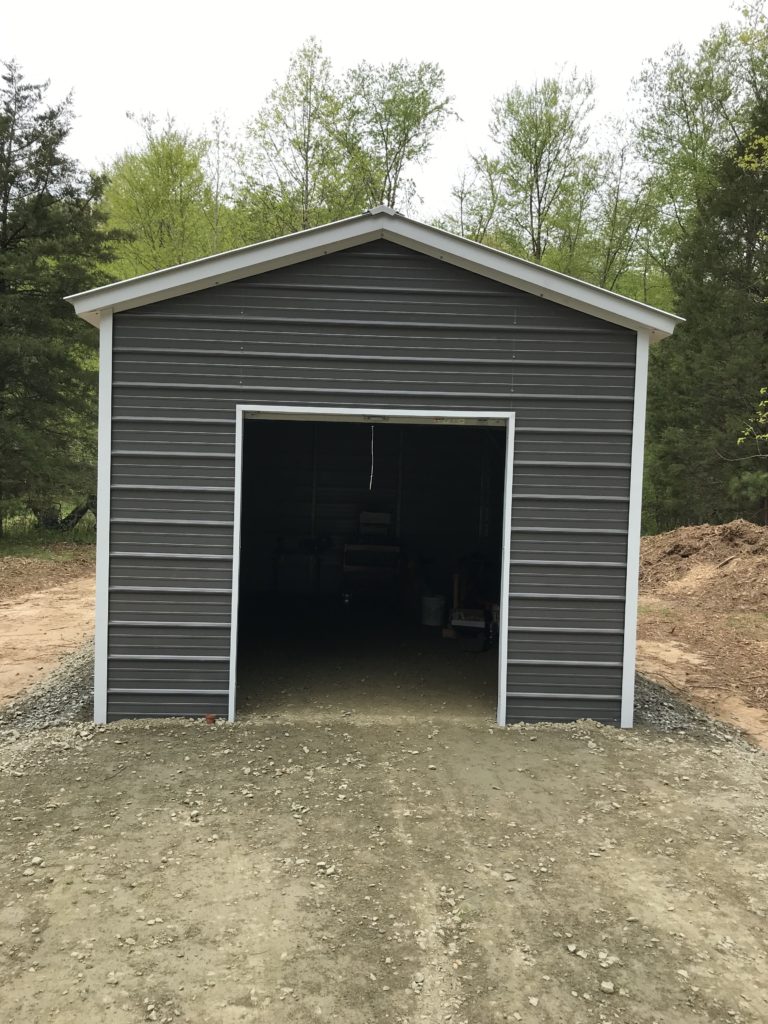
Thanks to the huge popularity of the television show, “Forged in Fire”, blacksmithing and bladesmithing are undergoing a huge swell of interest. Still, I wonder how many of these would-be smiths appreciate the deep history of their craft? Since our Ancestors first discovered the ability to smelt and forge iron, roughly 3400 years ago, the blacksmiths who possessed the knowledge and skill to convert stony ore to tools and weapons were thought to possess magic. In many cultures, the smith is regarded as a specialized type of shaman or magician, a master of an arcane process and specialized skills unknown by the general populace. Within the cultures which hold smiths in such regard, the smithy or workshop of such individuals is held as hallowed or particularly sacred, a place of transformation, and is generally viewed as a shrine to Fire.
The process of erecting a smithy here at TwoTrees began about two years ago, when my husband Eric, a sacred smith whose work is dedicated to the Dwarven craftsmen of Norse lore, got tired of dragging his anvil and forge in and out of the basement and concluded a dedicated and hallowed smithy was needed. We began by surveying the land, working with the vaettir, the land spirits, to find a location on our property willing to be used in this way. I’ve written about that process in my blog, “Collaboration With the Land”

When the time came to clear the spot for the smithy, we were blessed to work with a small company that understood our animist relationship with our land and completed the clearing of the space in a way that was respectful. Each tree to be removed was blessed and its spirit released before being mulched so that their biomass could be returned to the soil. Next, a gravel driveway and pad were installed. After much consideration and confirming divination, Eric settled on a sturdy and nonflammable steel building, honoring the adage that “Iron calls to iron.”
Once the building was completed, it was Eric’s desire to prepare the building for its service through ceremony. We are devout Heathens and work intensively with the Duergar, the Norse Beings responsible for the creation of many holy objects, so the intent of our ceremony was to deepen our connection with these Master Makers. We agreed that the building should be recaned (cleansed with smoke) and hallowed with Fire. In prior ceremonies, we’ve made offerings of good Scotch Whisky to the Duergar, and were aware that they also greatly value Oak.
In the golden light of the early April evening, we prepared to bless Eric’s smithy. We’d started by making a torch using a hazel branch wrapped on one end with cotton gauze cloth soaked in oil, because hazel is a plant associated with fire and used by the Norse to mark out sacred spaces. A table protected by a slab of slate would serve as our harrow or altar. On it we placed a small iron cauldron to contain our fire, along with our silver-mounted drinking horn for offering the scotch.

Outside, a love-sick mockingbird called out his territory and the wind whispered through the pines and cedars around us. Song plays a significant role in Duergar culture and in my own shamanic practice, and so we began with a Hailing, a calling upon the Gods, Ancestors and Holy Powers to attend and bless the smithy. Using soot, I traced two interlocking Kenaz runes in such a way as to create the rune Inguz on Eric’s forehead. Thus, two runes symbolizing fire united to form the rune of creation and fertility. We clasped hands, sharing joy at the realization of this long-held dream, and sang:
Fire, fire, heart of the forge
Burn in me, burn in me!
Eric turned to the harrow and in the ancient manner, ignited the fire in the cauldron with flint, giving ond – sacred breath – to feed the spark and ease the tinder into ignition. As the flames began to catch, I sang Galina Krasskova’s hymn to Sacred Fire:
Fire is holy, fire is holy –
In the flames our Ancestors speak.
Fire is holy, fire is holy –
Generations watching over me…
After feeding dry oak twigs to the small fire, Eric took up two large hammers – one new and one quite old – and passed them repeatedly back and forth through the dancing flames, honoring the blending of heritage and future creation. I lit a bundle of dried mugwort, one of the cleansing plants sacred in the Northern Tradition, and walked anti-sunwise around the interior of the building, blowing the purifying smoke over the walls and into the corners to clear away any residual mundane energies. When I was done, Eric dipped the torch in the fire and, with a whoosh, it ignited, the flame whirling and spiraling around it in the brisk evening breeze. Dedicating his smithy to The Duergar and to Andvari, Eric circumnavigated around the outside of the smithy carrying the lit torch, accompanied by more song. In the luminous spring evening, I sang the song the Duergar had given me long before as he circled the smithy a final time, pouring out generous libations of scotch from the drinking horn.
Hail hammer bright, hail anvil strong,
The blows that fall, our ancient song.
Strike true and hard, let hammer ring!
And so, my brothers, let us sing!

We have no information on how ancient Germanic and Scandinavian people actually blessed the work spaces of blacksmiths, but we do know that cultures and beliefs evolve. Our smithy blessing incorporated elements of lore and historical knowledge. Most importantly, it was offered with respect for the heritage and faith we value.
NOTE: You can learn more about the Duergar from my book, “The Duergarbok: The Dwarves of the Northern Tradition”, available from Asphodel Press.